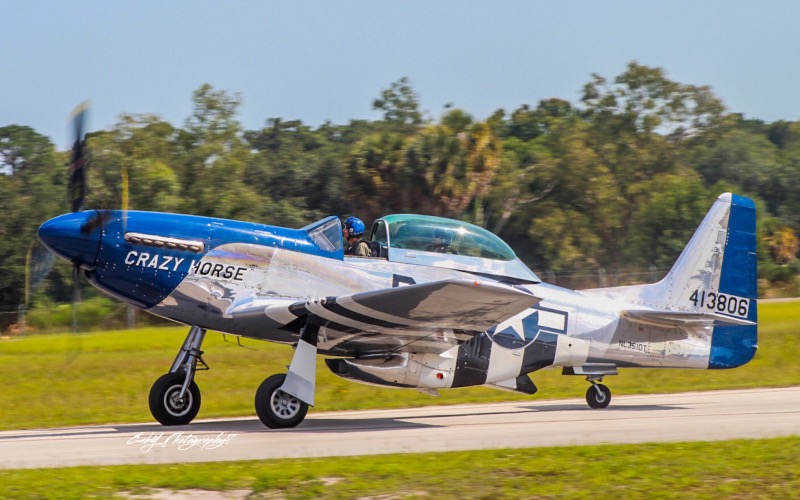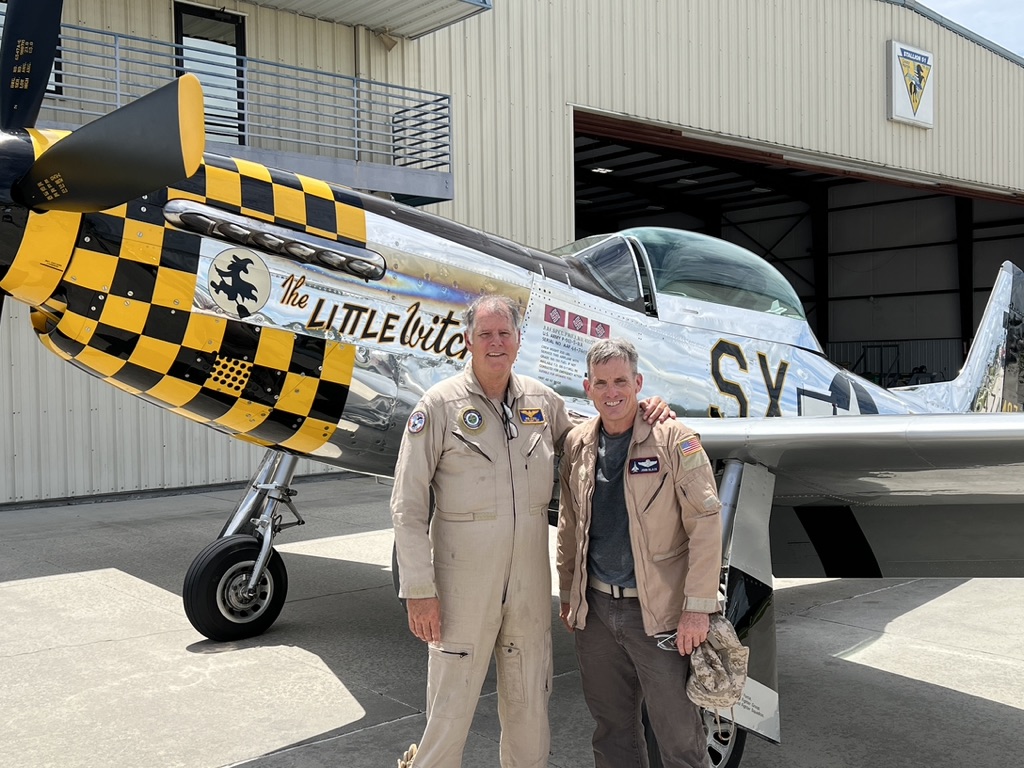Aircraft Information
> Aircraft Make: North American Aviation (NAA) Model: P-51 Nickname: Mustang
> Aircraft Mil Civ Description: Airplane SE Piston
> FAA Category and Class: Airplane Single Engine Land
> Engine Description: single (huge!) piston
Aircraft Experience
> As of: 6/25/2024
> Number of Hours Flown: 4
> Number of Times Flown: 3
> Other Aircraft Models Associated: none
First Flown Information
> Sequence First Flown: 30
> Date First Flown: 10/17/1986
> Location First Flown: NAS Patuxent River, MD (KNHK)
> Who and/or What Organization First Flown With: Bob Bryne (USNTPS Qual Eval)
Recollections: Yep, you’re reading it right…have flown the Mustang 3 times. Twice in the Navy (first time as a USNTPS Student, doing Qual Eval 3, and later–with Doug Schultz in the same airplane) and one more time in 2022 as part of an FAA flight test “Upset Avoidance and Recovery Training” course, flown with John Black of the UAT company, who do an excellent job with upset training. Not exactly a high time Mustang pilot (like those that own them or the lucky ones who somehow figure out how to fly one for somebody else), but enough to be comfortable in the plane. Looking at my logbook, I see that I’ve landed it 17 times (4 on the first flight, 12 times with Doug–>I remember wanting to focus on landings during that flight, and then 1 most recently).

(c) jet photos.com
Qual Eval 3–the exercise for which I first flew the P-51–followed “QE1 and QE2” are part of the over-arching “Qual Eval” program which is designed by USNTPS to breed a fundamental skill into it’s graduates…the skill of “adaptability”….being able to adapt to new aircraft, to understand what to study, how to prepare, how to test and how to report on the results of their testing. This is a skill which is relatively easy to explain, but difficult to achieve and it requires students at the school to first conduct these “mini test programs” under the tutelage of an instructor, eventually transitioning to doing it on their own. The learning NEVER ends, however. 38 years after graduating from USNTPS, I still conduct “Qual Evals”, both in my job and for pleasure.

(c) Bob Stoney
The flight as a student at TPS required a test plan before and then a full report after. In the report, I didn’t hold back, noting the extremely high control forces, very slow roll rate (at least compared to post-WW2 designs) and a bevy of human factors issues. But, the report also contains a detailed paragraph on the “Device Indicating Condition of Korelation”….this device was bigger following that P-51 flight in 1986. Much bigger.
Leave a Reply